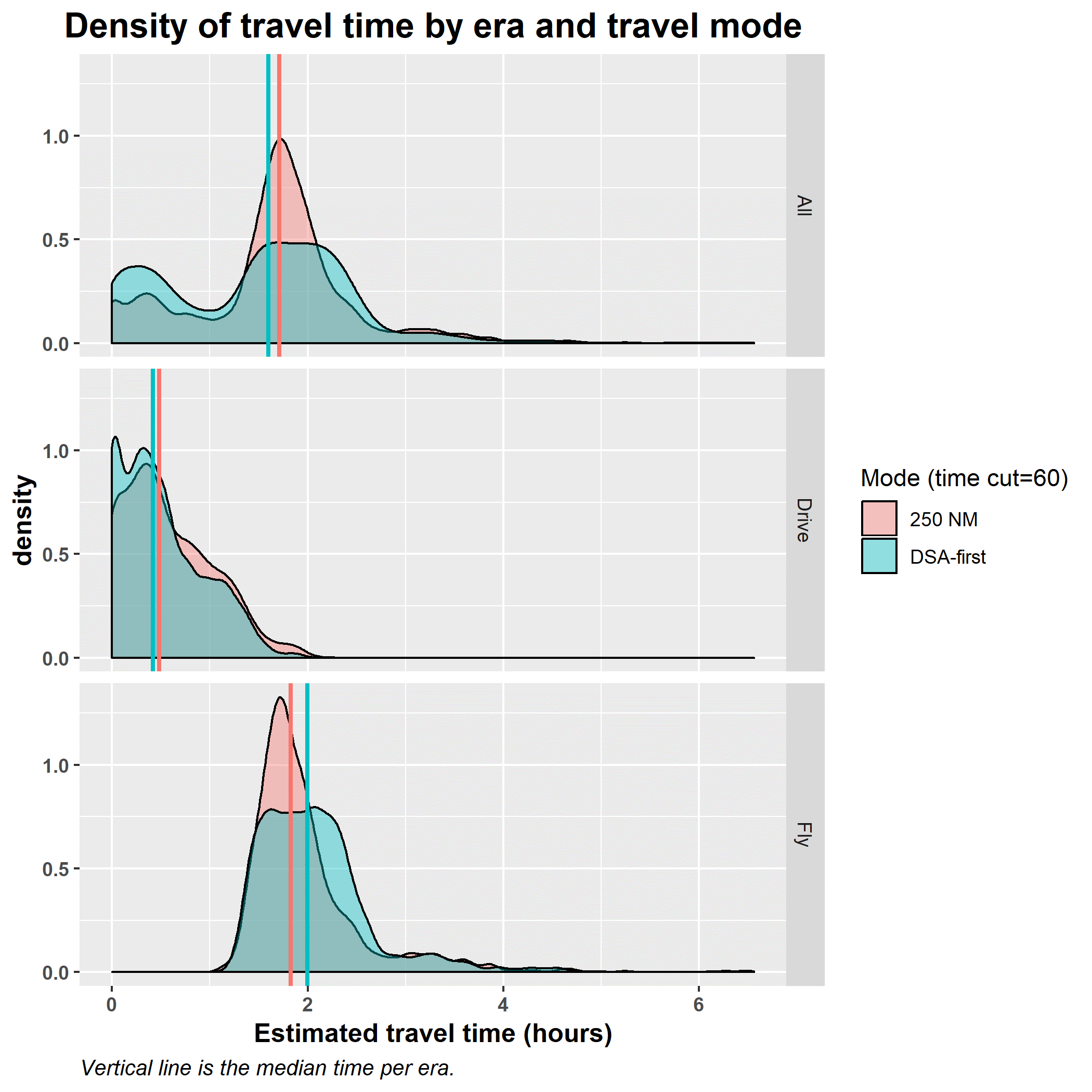Donor Lung Travel Distance and Time
1Cleveland Clinic, Cleveland, OH, 2SRTR, Minneapolis, MN, 3University of Washington, Seattle, WA
Meeting: 2020 American Transplant Congress
Abstract number: B-277
Keywords: Allocation, Donation, Ischemia, Lung transplantation
Session Information
Session Name: Poster Session B: Lung: All Topics
Session Type: Poster Session
Date: Saturday, May 30, 2020
Session Time: 3:15pm-4:00pm
 Presentation Time: 3:30pm-4:00pm
Presentation Time: 3:30pm-4:00pm
Location: Virtual
*Purpose: With the policy change from donation service area (DSA) to 250 nautical miles (NM) as the first unit of US lung allocation, distances between donors and recipients increased. We studied how increasing distances likely affected the travel time and mode used in organ procurement, an important consideration in evaluating the efficiency and associated costs of the new organ allocation policy.
*Methods: The study population included all lung and heart-lung transplant recipients from Jan 1, 2015-Nov 24, 2017 (DSA-first cohort) and Nov 25, 2017-Dec 31, 2018 (250NM cohort). Travel times between donor and recipient hospitals were estimated by geo-location using a Google application programming interface. For each donor-recipient pair, we assumed that if driving time exceeded 60 minutes, mode would switch to flying. Travel time was the driving time between hospitals or the flight time plus driving time between the hospitals and airports.
*Results: In the DSA-first cohort, 61.2% of organs were estimated to have been flown, vs. 75.4% in the 250NM cohort. Median donor-to-recipient distance increased from 124 to 190 miles. Median LAS increased from 40.6 (IQR 35.0-52.4) to 42.2 (IQR 35.5-57.4). Median estimated travel time increased slightly, from 96 to 103 minutes. For organs predicted to have been driven, median estimated travel time and distances were similar in each era: 25-30 minutes and 10-14 miles. For organs predicted to have been flown, estimated travel time was 2.0 hours in the DSA-first cohort and 1.8 hours in the 250NM cohort; median distances were 324 and 234 miles, respectively.
*Conclusions: Following the policy change that eliminated DSA as the first unit of allocation, travel distances for organ procurement increased, but not travel time. Flying for organ procurement is common in lung transplantation and is estimated to have increased by 15% after the policy change. Costs likely increased some, but higher-LAS candidates gained increased access to transplant.
To cite this abstract in AMA style:
Lehr C, Skeans M, Valapour M, Lease E. Donor Lung Travel Distance and Time [abstract]. Am J Transplant. 2020; 20 (suppl 3). https://atcmeetingabstracts.com/abstract/donor-lung-travel-distance-and-time/. Accessed December 18, 2025.« Back to 2020 American Transplant Congress

